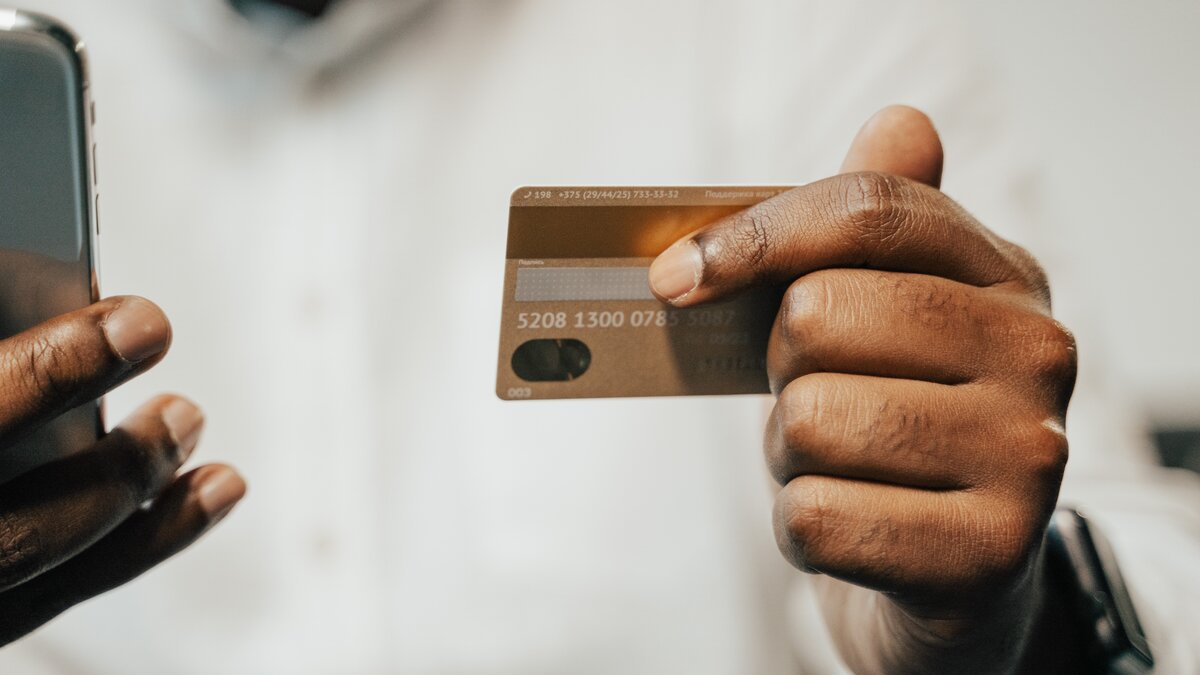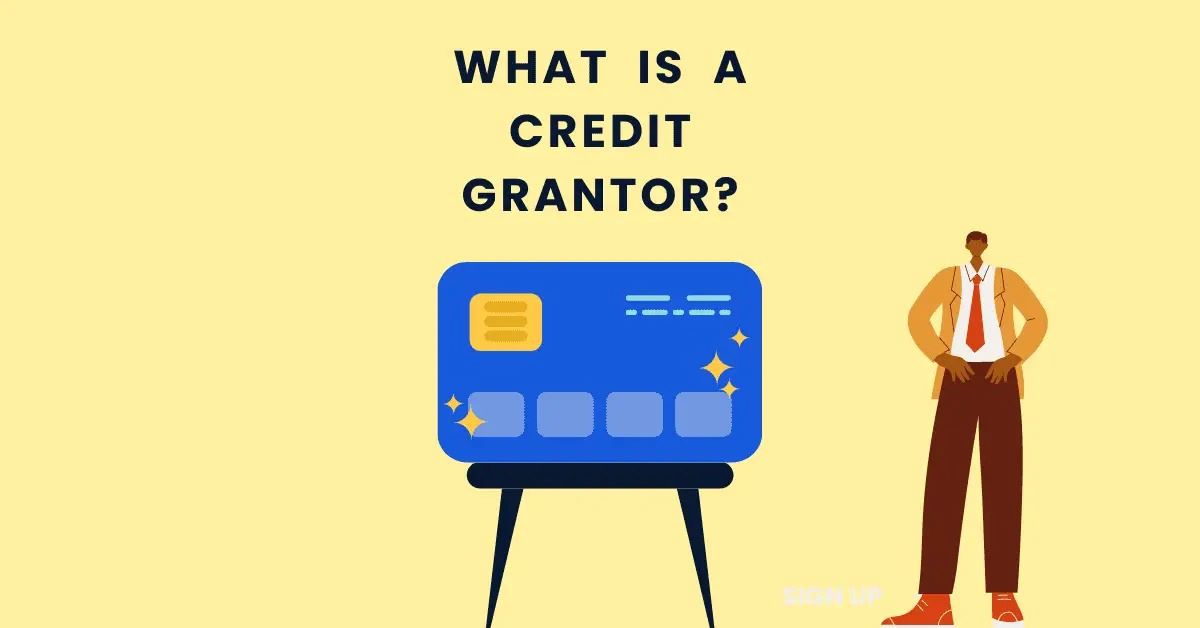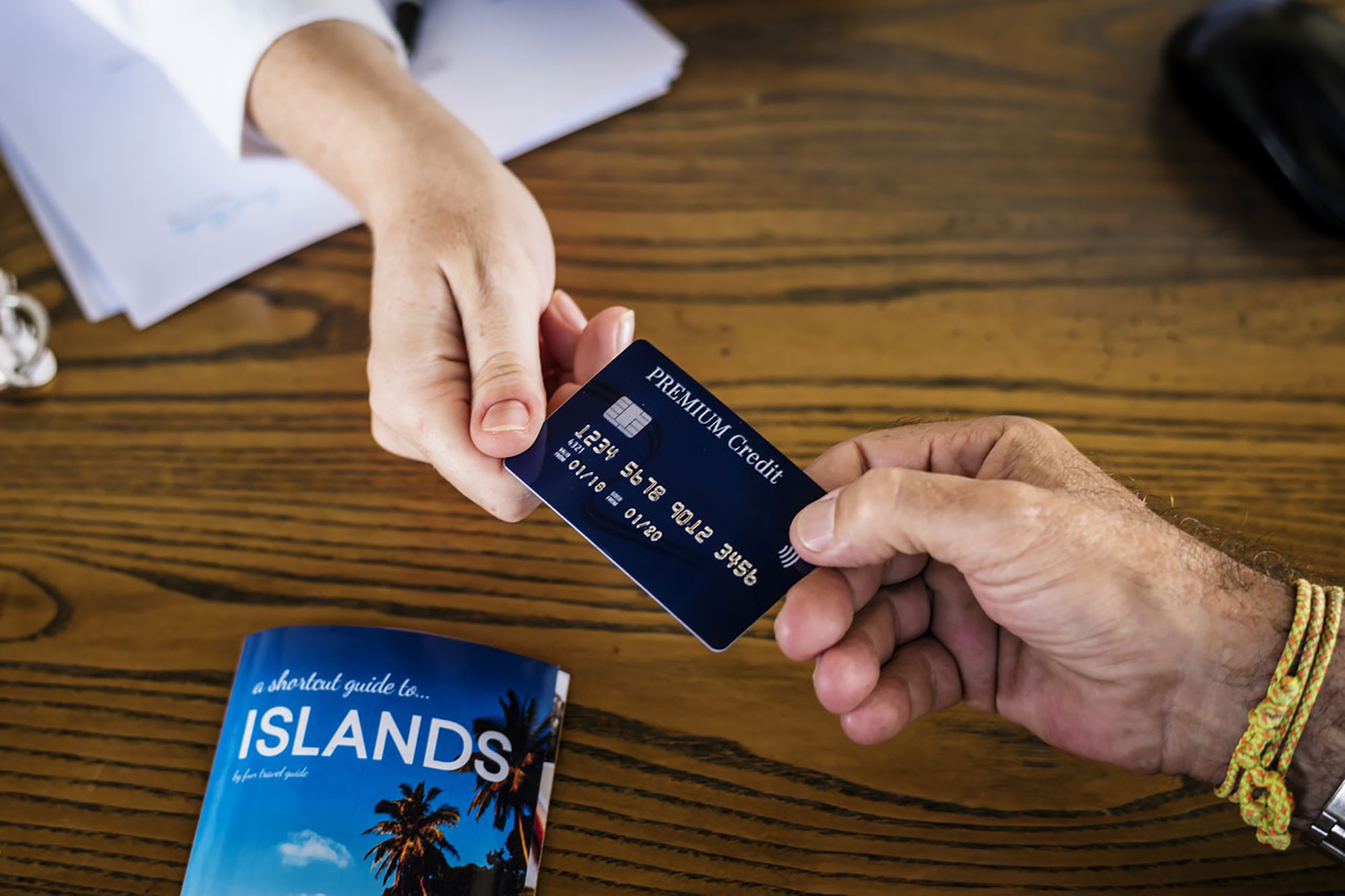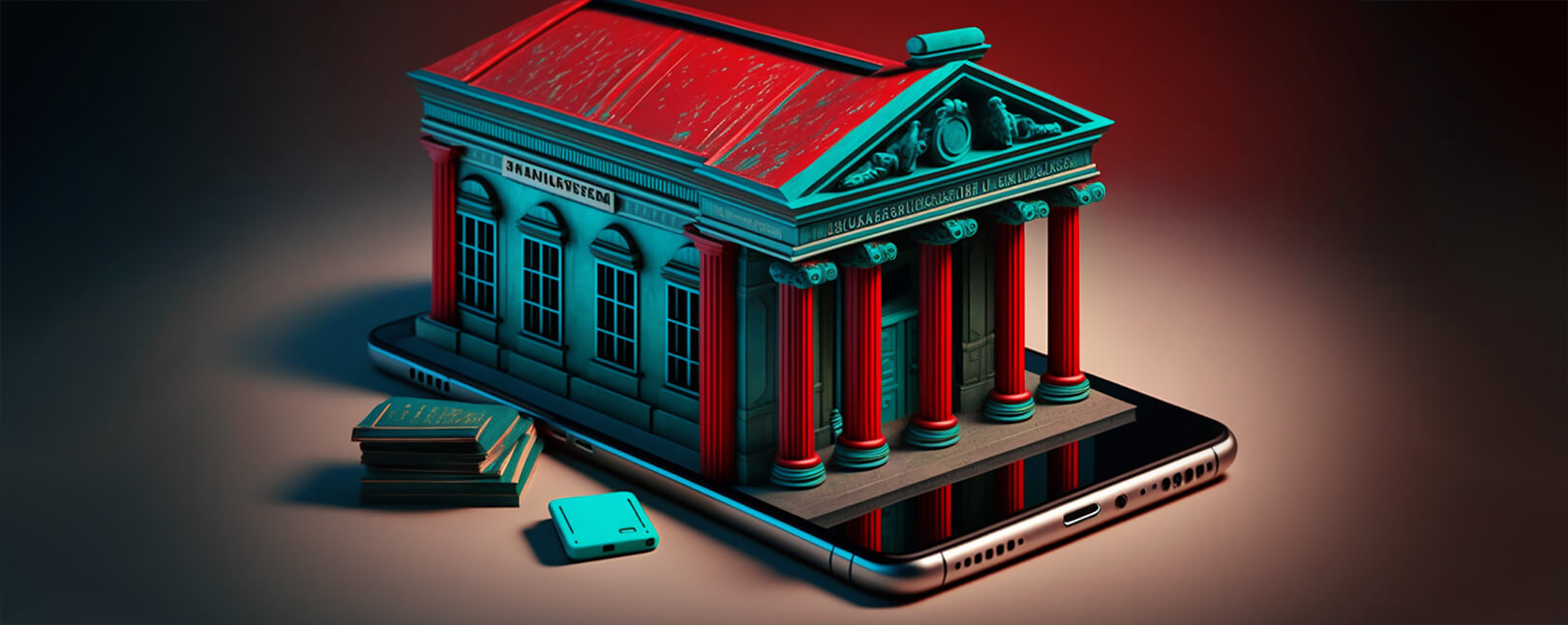

Finance
What Does Provisional Credit Mean
Published: January 13, 2024
Discover the meaning of provisional credit in finance and how it can impact your financial situation. Gain insights and understanding on this important concept.
(Many of the links in this article redirect to a specific reviewed product. Your purchase of these products through affiliate links helps to generate commission for LiveWell, at no extra cost. Learn more)
Table of Contents
Introduction
Welcome to the world of finance, where terms and concepts can sometimes feel overwhelming. Provisional credit is one such term that may leave you scratching your head. But fear not! In this article, we will demystify the concept of provisional credit and explore its significance in the world of banking.
Provisional credit is a term commonly used in the banking industry to refer to the temporary credit provided to a customer’s account for a disputed transaction or an error in their bank statement. It serves as a quick resolution for customers who are facing discrepancies in their account balances or unauthorized charges. It acts as a placeholder until the investigation into the disputed transaction is complete and a final decision is made by the bank.
Now, you may be wondering how the process of receiving provisional credit works. We will delve into that in the next section, but before we do, it’s important to understand the conditions under which provisional credit is granted.
Understanding the circumstances that warrant provisional credit is crucial because it helps customers navigate the complex world of banking and ensures that they are aware of their rights and remedies in case of discrepancies or unauthorized transactions.
Definition of Provisional Credit
Provisional credit refers to the temporary credit provided by a bank or financial institution to a customer’s account to address discrepancies, errors, or unauthorized transactions. It acts as a short-term solution while the investigation into the issue is underway.
When a customer detects an error in their bank statement or notices unauthorized charges, they have the right to dispute the transaction. In such cases, the bank may provide provisional credit to the customer’s account, essentially adding funds to temporarily balance out the discrepancy. The purpose of this credit is to provide immediate relief to the customer while the bank investigates the matter.
It’s important to note that provisional credit is not a final resolution. It is a temporary measure taken to alleviate any financial burdens faced by the customer due to the disputed transaction. The final decision regarding the validity of the transaction and any necessary adjustments to the account balance will be determined after a thorough investigation by the bank.
The process of receiving provisional credit starts when a customer contacts their bank to report the error or unauthorized transaction. The bank will then initiate an investigation to validate the legitimacy of the claim. During this time, the bank may provide provisional credit to the customer’s account, typically within a few days after the dispute is reported.
It’s important to remember that provisional credit is not automatically granted in all cases. The bank will assess the validity of the claim and the available evidence before deciding whether to provide provisional credit or not. This ensures that the process is fair and prevents any potential abuse of the system.
Now that we understand the definition of provisional credit, let’s explore the process of receiving it in more detail.
Process of Receiving Provisional Credit
The process of receiving provisional credit involves several steps that ensure a fair and efficient resolution for both the customer and the bank. Let’s take a closer look at how this process typically unfolds:
- Identification of the Discrepancy: The first step is for the customer to identify an error, discrepancy, or unauthorized transaction in their bank statement. This could be an incorrect charge, a double charge, or a transaction that the customer does not recognize or authorize.
- Contacting the Bank: Once the discrepancy is identified, the customer needs to contact their bank as soon as possible. This can usually be done through a customer service hotline, online banking platform, or by visiting a local branch. The customer must provide the necessary details about the disputed transaction, including the date, amount, and any relevant supporting documents or evidence.
- Verification and Investigation: After the customer reports the dispute, the bank’s investigation process begins. The bank will review the customer’s claim, examine the transaction records, and assess any available evidence to determine the validity of the dispute. This may involve contacting merchants, reviewing surveillance footage, or analyzing transaction data.
- Provisional Credit Decision: Based on the preliminary findings of the investigation, the bank will decide whether to provide provisional credit to the customer’s account. If the bank determines that the dispute is valid and there is sufficient evidence to support the claim, provisional credit will be granted to the customer.
- Notification to the Customer: Once the bank reaches a decision regarding the provisional credit, they will notify the customer. The customer will be informed of the amount of provisional credit granted and any further actions or documentation required from their end.
- Usage of Provisional Credit: The customer can then use the provisional credit to offset the disputed amount or any other expenses. It is important to note that provisional credit is provided as a temporary measure and must be treated responsibly. The customer should not rely on this credit for long-term financial planning.
- Resolution and Final Decision: The final step of the process involves the bank conducting a thorough investigation to finalize the resolution. This may take some time, as the bank needs to gather all the necessary information and possibly liaise with external parties, such as merchants or vendors, to resolve the dispute. Once the investigation is complete, the bank will make a final decision regarding the validity of the dispute and any necessary adjustments to the customer’s account balance.
The process of receiving provisional credit ensures that both the customer and the bank have a fair opportunity to present their case and reach a resolution. It provides immediate relief to the customer while protecting the bank against potential fraud or false claims.
Conditions for Provisional Credit
Provisional credit is granted to customers under specific conditions to ensure a fair and efficient process for resolving disputed transactions or account discrepancies. While the exact conditions may vary between banks and financial institutions, there are some common factors that determine when provisional credit is provided. Let’s explore these conditions:
- Prompt Reporting: Customers must report the discrepancy or unauthorized transaction to their bank promptly. Most banks have specific timeframes within which the customer must notify them, typically within 60 days of receiving the bank statement. Reporting the issue in a timely manner allows the bank to initiate an investigation promptly and determine the best course of action.
- Proper Documentation: Customers need to provide accurate and detailed documentation to support their claim. This may include transaction receipts, emails, or any other evidence that strengthens their case. The more information provided, the easier it becomes for the bank to validate and resolve the dispute effectively.
- Reasonable Belief of Error: The customer must have a reasonable belief that there is an error or unauthorized transaction in their account. This means that the customer should be confident that they did not authorize the transaction or that there is a discrepancy in the details provided by the bank.
- No Default on Account: Provisional credit is generally not provided to customers who have a history of defaulting on their accounts or engaging in fraudulent activities. The bank will take into consideration the customer’s account history and assess their eligibility for provisional credit based on their past behavior.
- No Collusion in Fraud: Customers must not be involved in any fraudulent activities or collude with third parties to manipulate their accounts. Provisional credit is provided to genuine cases of errors or unauthorized transactions, and any attempts to deceive the bank will result in denial of provisional credit and potential legal consequences.
- Cooperation with Investigation: Customers must cooperate fully with the bank’s investigation process. This may involve providing additional information, responding to inquiries, or working closely with the bank to resolve the dispute. Failure to cooperate may lead to a delay in the resolution or denial of provisional credit.
It’s important for customers to familiarize themselves with the specific conditions outlined by their bank regarding provisional credit. Understanding these conditions ensures that customers are aware of their rights and responsibilities and can navigate the process effectively.
Now that we have explored the conditions for provisional credit, let’s move on to the benefits it offers to customers.
Benefits of Provisional Credit
Provisional credit offers several benefits to customers who encounter discrepancies or unauthorized transactions in their bank accounts. Let’s take a closer look at some of the key advantages of provisional credit:
- Immediate Financial Relief: One of the primary benefits of provisional credit is that it provides immediate financial relief to customers. When a customer reports a disputed transaction or an error in their account, provisional credit allows them to have access to the disputed amount while the investigation takes place. This can be particularly helpful in cases where the discrepancy has caused financial strain or inconvenience for the customer.
- Reduced Financial Impact: Provisional credit helps minimize the financial impact of a disputed transaction or account discrepancy. By quickly addressing the issue and providing temporary credit, customers can avoid potential late fees, overdraft charges, or other financial penalties that may occur if the discrepancy is not resolved promptly.
- Protection against Unauthorized Charges: Provisional credit offers an added layer of protection for customers against unauthorized charges. If a customer identifies a transaction they did not authorize, the provision of temporary credit ensures that their account balance is not negatively affected while the investigation is ongoing. This helps prevent any further loss or financial damage to the customer.
- Promotes Customer Trust and Confidence: By offering provisional credit, banks demonstrate their commitment to customer satisfaction and fair resolution of disputes. This instills trust and confidence in customers, knowing that their concerns will be addressed promptly and that their financial well-being is protected by the bank.
- Encourages Efficient Investigation: Provisional credit motivates banks to conduct thorough and efficient investigations into disputed transactions. The temporary credit acts as an incentive for the bank to resolve the issue promptly, ensuring that the customer’s account balance is adjusted accurately and any necessary corrective actions are taken promptly.
- Promotes Financial Inclusion: Provisional credit can be particularly beneficial for customers who may be financially vulnerable or facing economic hardships. It ensures that they have access to necessary funds while the investigation takes place, reducing the potential negative impact on their financial stability.
It is important to note that while provisional credit offers these benefits, it is still a temporary measure. The final decision regarding the disputed transaction or account discrepancy will be made by the bank after a thorough investigation. Nevertheless, provisional credit provides valuable support and relief to customers during this process.
Now that we have explored the benefits of provisional credit, let’s take a closer look at some of the risks and limitations associated with it.
Risks and Limitations of Provisional Credit
While provisional credit provides immediate relief and benefits to customers, it also comes with certain risks and limitations. It is important to be aware of these aspects when dealing with provisional credit. Here are some of the key risks and limitations:
- Reversal of Provisional Credit: It’s essential to understand that provisional credit is not permanent. If the bank’s investigation determines that the disputed transaction is valid or the customer is at fault, the provisional credit may be reversed, and the customer will be liable for the disputed amount. Customers should not solely rely on provisional credit and should be prepared to handle any potential financial obligations if the credit is reversed.
- Delay in Resolution: The investigation process for disputed transactions can take time. While provisional credit provides temporary relief, it does not guarantee an immediate resolution. Customers may need to wait for an extended period for the investigation to conclude and for a final decision to be made. This delay may cause inconvenience or prolonged financial uncertainty for the customer.
- Limited Coverage: Provisional credit may not cover all types of disputes or discrepancies. Banks have specific guidelines regarding what qualifies for provisional credit, and disputes that fall outside these guidelines may not be eligible for temporary credit. It is important for customers to familiarize themselves with their bank’s policies to understand the scope of coverage provided by provisional credit.
- Submission of Proper Documentation: To qualify for provisional credit, customers must provide accurate and sufficient documentation to support their claim. Failure to provide the necessary evidence or incomplete documentation may result in the denial of provisional credit. Customers should ensure that they have the required documentation readily available to strengthen their case during the investigation process.
- Potential Impact on Credit Score: In some cases, the provision of provisional credit on a disputed transaction may have temporary implications for the customer’s credit score. While the credit score impact is usually minimal, it is advisable for customers to monitor their credit reports and address any discrepancies promptly to avoid any negative consequences on their creditworthiness.
Understanding the risks and limitations associated with provisional credit is essential to manage expectations and make informed decisions. Customers should communicate with their bank and seek clarification regarding any concerns or questions they may have about the provisional credit process.
Now that we have explored the risks and limitations, let’s compare provisional credit to permanent credit to gain a better understanding.
Provisional Credit vs. Permanent Credit
Provisional credit and permanent credit are two distinct concepts in the realm of banking. While both involve adjustments to a customer’s account balance, they serve different purposes and have different outcomes. Let’s compare provisional credit to permanent credit to understand their differences:
Provisional Credit:
Provisional credit is a temporary credit provided to a customer’s account during the investigation of a disputed transaction or an account discrepancy. It acts as a placeholder to alleviate any financial burdens faced by the customer while the bank examines the validity of the dispute. Provisional credit is granted to provide immediate relief to customers and ensure they have access to necessary funds during the investigation process. However, its status is temporary, and the final decision regarding the dispute will determine whether the provisional credit becomes permanent or is reversed.
Permanent Credit:
Permanent credit, on the other hand, refers to a permanent adjustment made to a customer’s account balance. Unlike provisional credit, permanent credit is not temporary and is not subject to reversal. It is typically applied when the investigation into a disputed transaction or account discrepancy concludes, and the bank determines that the customer is indeed owed the credited amount. Permanent credit is a final resolution, and the adjusted account balance reflects the correction made by the bank.
It’s important to note that the transition from provisional credit to permanent credit depends on the outcome of the investigation. If the dispute is validated and confirmed to be in the customer’s favor, the provisional credit may become permanent. However, if the dispute is deemed invalid or the customer is found to be at fault, the provisional credit may be reversed, and the customer will be responsible for the disputed amount.
Understanding the difference between provisional and permanent credit is crucial for customers to manage their financial expectations. While provisional credit provides immediate relief, it is only a temporary measure until the investigation is complete. Permanent credit, on the other hand, signifies a final resolution and a permanent adjustment to the account balance.
Now that we have compared provisional credit to permanent credit, let’s conclude our discussion on provisional credit and its significance in the banking industry.
Conclusion
In conclusion, provisional credit plays a crucial role in the banking industry by providing temporary relief to customers facing errors, discrepancies, or unauthorized transactions in their bank accounts. It offers immediate financial respite and allows customers to access funds while the bank conducts a thorough investigation into the matter.
While provisional credit offers several benefits, such as alleviating financial strain and protecting customers against unauthorized charges, it is important to be aware of the risks and limitations associated with it. Provisional credit is not a guaranteed resolution, and customers should be prepared for the possibility of the credit being reversed if the investigation determines the dispute to be invalid or the customer is found to be at fault.
The process of receiving provisional credit involves promptly reporting the discrepancy, providing proper documentation, cooperating with the investigation, and understanding the specific conditions outlined by the bank. It is crucial for customers to familiarize themselves with their bank’s policies to ensure they meet the requirements for provisional credit.
Provisional credit differs from permanent credit in that it is temporary and subject to investigation and final resolution. Permanent credit, on the other hand, represents a permanent adjustment to the account balance once the investigation concludes and a final decision is made by the bank.
Overall, provisional credit serves as a valuable mechanism for addressing account discrepancies and unauthorized transactions in a timely manner, promoting customer trust and confidence in the banking system. By understanding the process, conditions, benefits, and limitations of provisional credit, customers can navigate the often complex world of banking with greater assurance and ensure their financial well-being is protected.














